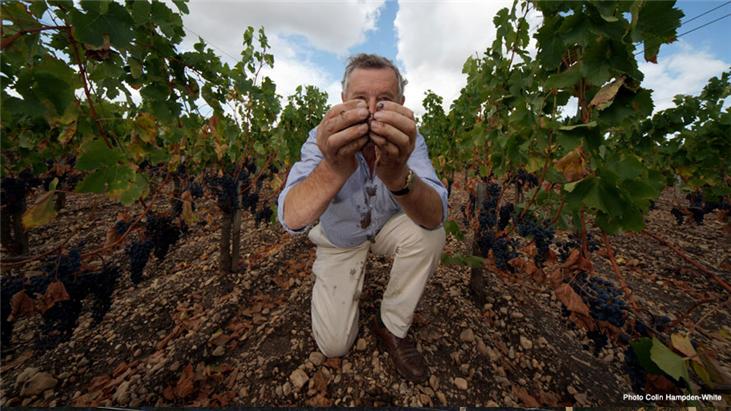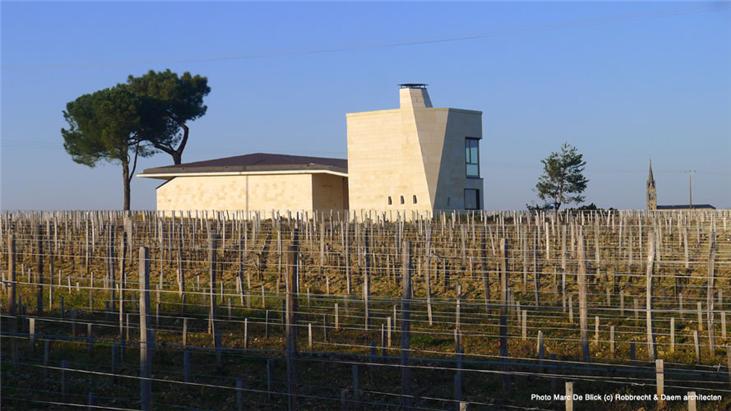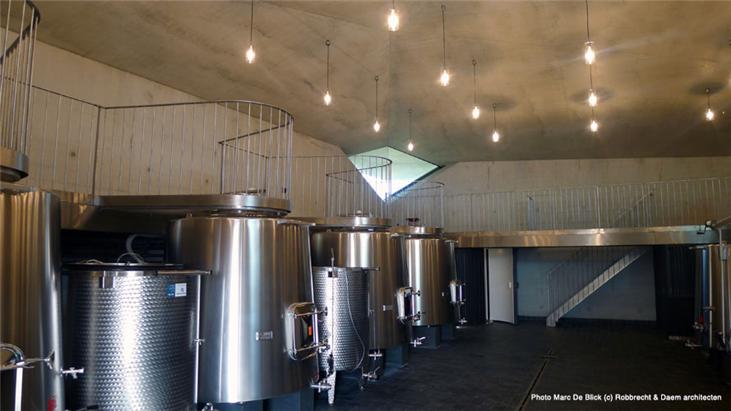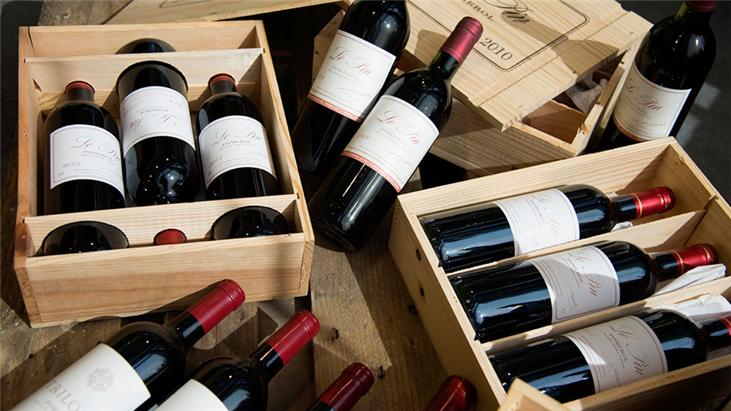Pomerol counts 140 winemakers but only one makes Le Pin Pomerol. The wine is one of the most exclusive - and most expensive - Bordeaux wines, and praised by Robert Parker. As a Belgian company we are proud Château Le Pin is run by a Belgian family and we love to share their story.
The history of Château Le Pin
Madame Laubie, who owned the property from 1924 to 1979, sold the wine in nameless bulk to Bordeaux negociants. These wine merchants blended the wine with other wines and sold the result under their own name. But that changed in 1979 when Jacques Thienpont bought the property and the first vintage of Le Pin - with this name on the label - was born.
The property and cellars of Le Pin were in poor condition and large investments were needed. To save money in the early years they had to be creative, and they aged the first Le Pin wine in used oak barrels from Vieux Château Certan, another vineyard of the family Thienpont. The secondary fermentation also had to happen in these barrels because there wasn’t any money. Jacques Thienpont was the first wine maker in Bordeaux to do this: “We didn’t do it because of the process or taste but because we didn’t have another choice.” Necessity is the mother of invention, and years later other wine makers followed his example.
Until a few years back both the winery and château were very humble for such a grand wine like Le Pin. However, in 2012 they opened the new winery designed by the famous Belgian architects Robbrecht & Daem: “The storehouse for wine barrels, the ‘Chai à barriques’, is entirely underground and is the heart of the building. This reduces the overall height of the building, which keeps its impact on the surroundings to a minimum.”
Jacques Thienpont, the man behind Le Pin
Jacques Thienpont grew up in a family of wine merchants, wine lovers and wine makers. He travels between Pomerol and Etikhove (Belgium) where he runs the wine store founded by an ancestor in 1842. At Château Le Pin his wife Fiona - the first female ‘Master of Wine’ - and cousin Cyrille are his partners in winemaking.
Jacques Thienpont’s grandfather is the reason why the family is actually present in Pomerol. In 1921 he bought Troplong Mondot, and three years later Château Certan. In 1934 he unfortunately had to sell Troplong Mondot: for 4 years in a row diseases had ruined the harvest and nobody had money to buy wine because of the financial crisis. Yet, Château Certan is still in the family.
The vineyards
The grapevines of Le Pin grow in the outskirts of Catusseau in the middle of a clayey plateau. The surface of the soil consists of gravel mixed with clay and sand while the underground first shows a blend of gravel and sand, and deeper down clay mixed with iron-dirt.
The soil of the vineyard is really fragile as it doesn’t stand drought nor high quantities of rain. The clay in the soil tends to retain water, which creates a reserve for hot summer days but drowns the grapevines during relentless rainshowers.
The earth is also considered a ‘hot soil’, which means they have to harvest early and long before other vineyards do. In 2003 it was extremely warm: the grapes tasted like dried prunes and weren’t good enough so they didn’t produce any wine that year. Le Pin Pomerol 2003 simply does not exist.
Over the years Jacques Thienpont extended the domain with extra land but the yearly production is still very small in comparison with other vineyards. They can produce 9.000 bottles per year but limit the production to 6.000 bottles. “The volume may never be the main goal. If you think long term, only quality matters.”
Praised by great wine connoisseurs
In 2012 Robert Parker gave Le Pin Pomerol 2009 a score of 100/100 in his Wine Advocate. And it wasn’t the first time: his 100/100 score for Le Pin Pomerol 1982 introduced the Bordeaux wine to the world and boosted the Château’s name and fame.
Jacques Luxey - an authority in the wine world - called the wine the ‘Romanée-Conti of the Bordeaux region’, and Rene Gabriel, who’s responsible for the wine purchases at hotel imperium Mövenpick, is also a big fan. He tasted Le Pin for the first time during a blind tasting and immediately contacted Jacques Thienpont: “I need to know how you make this wine!”
The great success of Le Pin lies in the fact everybody profits from the wine: the family, the sommelier, the trader and the consumer.
The other wines of Le Pin
As we wrote before, the family has a rigorous selection process and doesn’t use all the barrels of wine. There isn’t enough wine to make a second label each year but over the years they have enough volume to make a blend they call Trilogie, which is described to be more ‘exotic’ than traditional Bordeaux wines.
In 2010 Jacques Thienpont bought a another vineyard on a limestone plateau east of St. Emilion and called it L’If, which means Yew Tree. The name matches with Le Pin, which also refers to a tree, and plays with the English word ‘if’: “While making wine you’re faced with a lot of choices and possibilities.” The wine tastes structured, fresh and velvety and is a perfectly fine wine.
In the first place the family wants to make good wine but wine also has to go back to the people. That’s why they also brought Trilogie and L’If on the market. An ‘image’ is not a reality and wine is ‘only a drink’.
A must-have for your wine cellar
Some people say: “If you don’t have Le Pin in your wine cellar, you don’t have a true wine cellar.” When you are interested in buying a bottle of Le Pin, always make sure to buy at a trustworthy trader as there are many fake bottles on the market. Since a few years the wine label is being printed on paper made in Switzerland - it’s the same paper they use for post stamps. The wine label contains details only visible when exposed to UV light and each year they change the ‘secret drawing’.
At Belgium Wine Watchers we inspect each bottle - and it’s origin - to guarantee you buy an authentic Le Pin. If you’re lucky you can get your hands on Le Pin Pomerol 1979 but we also have other great years like Le Pin Pomerol 2010 and Le Pin Trilogie. Or are you curious about Thienpont’s L’If? You can buy directly from our online shop or contact us if you need advice. We’re happy to help you.
Credits photos: Colin Hampden-White (portrait), Marc De Blick for Robbrecht & Daem (winery)







